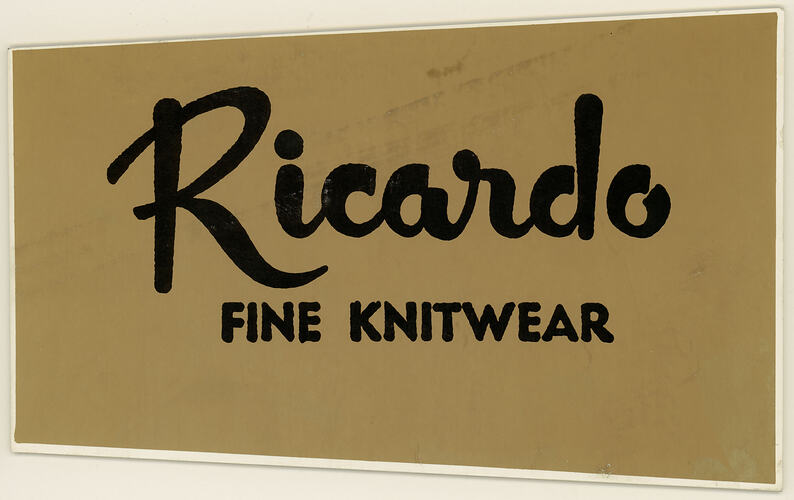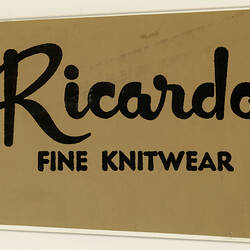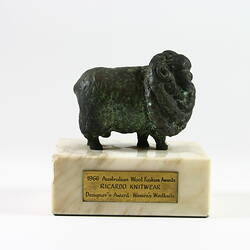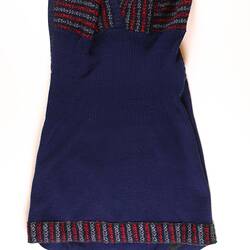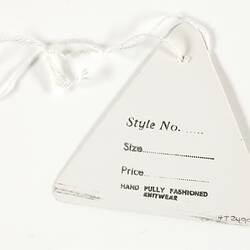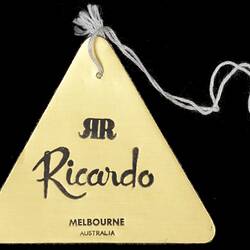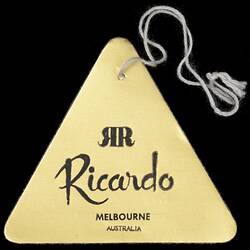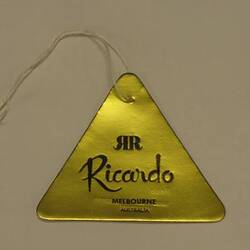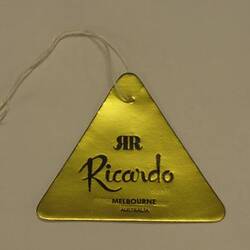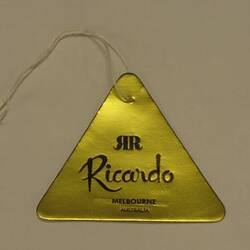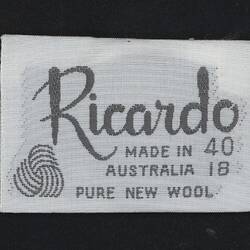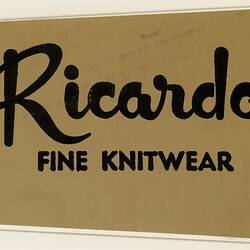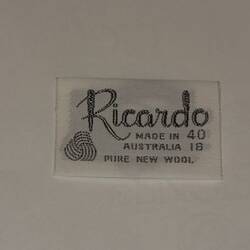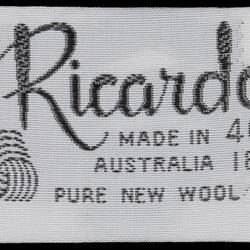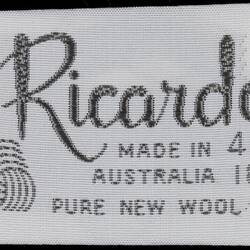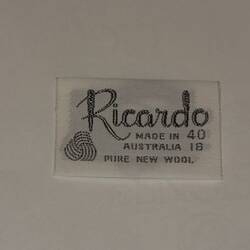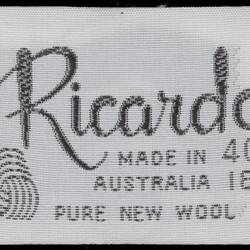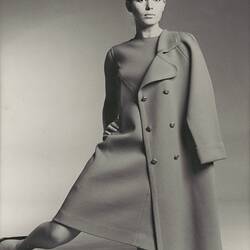Richard Charlupski, the founder of Ricardo Knitwear in Melbourne, was born in Warsaw, Poland on 20 March 1920. His father was a successful dealer in the textile trade, and the family enjoyed a comfortable life with a house in the city and a small estate in the country. Richard's fondest memories are of the country house, where he had a pony and several dogs.
Richard finished his matriculation in Warsaw and planned to go to Belgium in 1938 to train as a chocolatier, a trade he chose because it required little in the way of start-up funds and could be practised anywhere in the world. Instead, he found himself conscripted into the Polish army, in response to the deteriorating relationship with Germany. Richard served in the Polish army but was captured early in the conflict and spent most of World War II first interned in the Polish Ghetto in Warsaw and then transported with his family in cattle train wagons to the Auschwitz concentration and death camp complex where his mother and sister perished along with over one million people. Upon his release from a subsequent death camp in 1945, he discovered that his entire family were dead. Richard's own survival is a testament to human resilience and his will to live. Richard still bears on his arm the identification number tattoed by the Nazis.
Richard was able to make his way to Paris at the invitation of some French prisoners with whom he had become friends in the camp. At the suggestion of these same friends, he applied for a job in the knitting industry, on the grounds that it was quick to learn and he could soon be earning a living. He spent five years in the industry, but hopes for setting up his own factory in Paris were thwarted by French regulations that required businesses to be owned by French citizens. Richard decided to migrate to Australia, where he had friends.
Richard departed from Genoa, Italy on the SS Surriento and arrived in Melbourne on 28 December 1950. There were so many passenger ships arriving at Station Pier that his ship had to disembark at a goods warehouse in Port Melbourne. Because his friends had been able to arrange a migration permit for him, he was able to look for work immediately. His lack of English was a significant obstacle, so he went to work as a hand in a knitwear factory. At this time there were many small garment factories operating in the inner suburbs of Fitzroy, Collingwood, Abbotsford and Preston.
Richard found the early years very difficult, but by 1958 he had learned enough English and saved enough money to be able to open his own business. Although the business was originally called 'Leicester Knitting', Richard soon changed it to 'Ricardo Knitwear', playing on the public perception that Italian knitwear was the finest in the world. He opened a small factory on Johnston Street, Collingwood, but also employed outworkers, of whom the most important was Edda Azzola, a migrant from Pontebba, Italy. Richard regarded Italian migrant women as the best workers in the knitwear industry and employed them exclusively. They knew him as 'Mr Richard' or 'Mr Ricardo'.
Ricardo Knitwear produced 'fully fashioned' knitwear for men and women, a term that refers to the fact that the garments were shaped as they were knitted on the machine, rather than being cut from a bolt of knitted fabric and seamed together. This was a time-consuming and expensive process that had to be done by hand, but it resulted in beautifully styled and finished garments. Richard used only Australian merino wool for his garments, which he bought from Coats Patons in Melbourne.
Richard employed the same designer for the 20 years that Ricardo Knitwear was in business. The designer would sketch the models and Richard would deliver them with the wool to the skilled knitters like Edda, who would decide how to shape the pieces on the knitting machine in order to achieve the look. Richard would pick up the finished sections and take them to the factory where they were assembled into garments. Sometimes he was so busy that Edda would drop her completed work off to the factory. The final garments were sold to Myer and David Jones department stores as well as top-end boutiques and the exclusive Georges department store.
From 1958 to 1978, Ricardo Knitwear entered the annual Australian Wool Fashion Awards, an initiative of the Australian Wool Board to promote Australian wool on the international stage. Ricardo Knitwear consistently won the knitwear division for both menswear and womenswear and four times won the Supreme Award for the best garments in the competition. In 1967, a three-piece women's pantsuit was selected to be part of the display in the Australian pavilion at Expo 67 in Montreal.
Restructuring of the labour and regulatory markets in the 1970s meant that Australian-made garments were increasingly expensive to make, while the reduction in import tariffs allowed cheap imported clothing to enter the market. Many Australian manufacturers chose to move their production offshore, but the highly skilled, labour-intensive nature of Ricardo Knitwear's production could not be exported. In the face of mounting costs and the increasing popularity of cheap fashion, Richard Charlupski closed Ricardo Knitwear in 1978. Edda had retired three or four years earlier.
Richard opened a second business manufacturing low-cost, mass-market ladies' knitwear which he sold to Coles supermarkets to be marketed under their house brand. It was such a change from the high fashion of Ricardo Knitwear that he refused to let Edda see the new line. The business lasted for 14 years, but it never occupied the place in Richard's heart that Ricardo Knitwear had, and Richard closed it in 1992.
More Information
-
Keywords
Fashion Design, manufacturing industry, clothing factories, clothing
-
Authors
-
Article types
